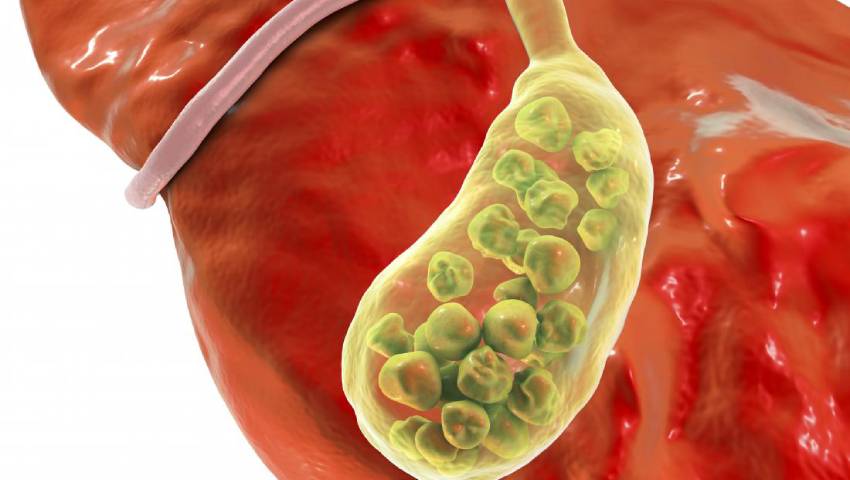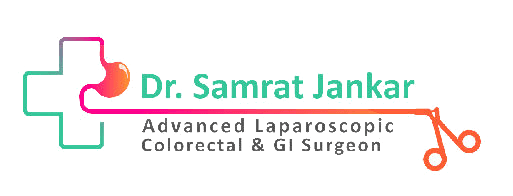
- 23/11/2023
- Dr. Samrat Jankar
- 0 Comments
- Blog
Common Symptoms of Gallbladder Disease and How to Recognize Them
Gallbladder disease is a common medical disorder that affects millions of people worldwide. Understanding the symptoms of gallbladder disease is essential for early diagnosis and effective treatment. In this blog post, we’ll delve into the various signs and symptoms of gallbladder disease and provide insights from Dr. Samrat Jankar, the best gallbladder Specialist in Pune, Maharashtra, to help you recognize and address them.
What Is the Gallbladder?
The gallbladder is a small, pear-shaped organ located beneath the liver. Its primary role is to store and concentrate bile, a digestive fluid assembled by the liver. Bile is vital for breaking down fats in the digestive process. When you consume fatty foods, the gallbladder contracts, releasing bile into the small intestine to help in digestion.
Common Types of Gallbladder Disease:
Gallbladder disease is an umbrella term that encompasses various conditions affecting the gallbladder. Two of the most common types of gallbladder disorder are:
- Gallstones: Gallstones are tough, pebble-like deposits that form in the gallbladder. They can vary in size and may cause a range of symptoms, from mild discomfort to severe pain. Gallstones can block the bile duct, leading to inflammation and infection.
- Cholecystitis: Cholecystitis is inflammation of the gallbladder, usually caused by gallstones. It can be acute or chronic and typically results in abdominal pain, nausea, and vomiting.
Symptoms of Gallbladder Disease:
Gallbladder disorder can manifest through a variety of signs, which may vary in intensity from person to person. Some of the common symptoms of gallbladder disorder include:
- Abdominal Pain: One of the hallmark signs of gallbladder disease is abdominal pain, especially in the upper right quadrant or the center of the abdomen. This pain can range from a dull discomfort to intense, sharp pain and may come and go.
- Back Pain: Gallbladder pain can radiate to the back, especially between the shoulder blades. This referred pain can be confusing, as it may not be immediately associated with the gallbladder.
- Nausea and Vomiting: Many people with gallbladder disease experience nausea and vomiting, specifically after eating a fatty meal. Nausea may be severe and persistent.
- Bloating and Gas: Gallbladder problems can cause excessive gas and bloating, making you feel uncomfortable after meals.
- Indigestion: Difficulty in digesting fatty foods is a common symptom of gallbladder disorder. You may feel full and painful even after ingesting small amounts of fatty foods.
- Changes in Bowel Habits: Some individuals with gallbladder disease may experience changes in their bowel habits, such as diarrhea or pale-colored stools.
- Jaundice: In rare cases, gallstones can block the bile duct, leading to jaundice, a condition marked by yellowing of the skin and the whites of the eyes.
- Fever: Cholecystitis, or inflammation of the gallbladder, can result in a fever, which is often accompanied by other signs like abdominal pain and tenderness.
Recognizing the Symptoms:
Gallbladder disease signs can overlap with other conditions, making it challenging to diagnose based only on symptoms. However, identifying these common symptoms and their patterns can be instrumental in seeking medical attention and obtaining an accurate diagnosis. Dr. Samrat Jankar, a leading gastroenterologist in Pune, emphasizes the significance of listening to your body and seeking medical advice when these symptoms arise.
- Pay Attention to the Location of Pain: If you experience pain in the upper right quadrant or the middle of your abdomen, it’s crucial to consider the gallbladder as a potential source. Keep track of the pain’s intensity and duration.
- Observe When Symptoms Occur: Note when your symptoms arise. If they tend to occur after consuming fatty foods, it could be a symptom of gallbladder issues. Be mindful of any recurring patterns.
- Document Additional Symptoms: Document any accompanying symptoms, such as nausea, vomiting, bloating, and changes in bowel habits. These can provide valuable information to your healthcare provider.
- Consider Your Risk Factors: Some people are more sensitive to gallbladder disease due to factors like age, gender, obesity, and a family history of gallstones. Understanding your risk factors can help you and your doctor evaluate the likelihood of gallbladder disease.
When to Seek Medical Attention?
If you experience any of the signs noted above, it’s essential to consult a healthcare professional. While gallbladder disease can be managed with lifestyle modifications and medications in some cases, severe cases may require surgery to remove the gallbladder, known as cholecystectomy.
Dr. Samrat Jankar recommends seeking medical attention if you experience:
- Severe or persistent abdominal pain
- Jaundice (yellowing of the skin and eyes)
- High fever
- Vomiting or diarrhea that doesn’t subside
- Sudden, intense pain that may indicate a gallbladder attack
Diagnosing Gallbladder Disease:
If you suspect you have gallbladder disorder, your healthcare provider will perform a thorough evaluation to make an accurate diagnosis. Diagnostic methods may include:
- Physical Examination: Your doctor will examine your abdomen and inquire about your signs.
- Blood Tests: Blood tests can help determine signs of infection, inflammation, or liver function abnormalities.
- Imaging Studies: Ultrasound, CT scans, and MRIs can visualize the gallbladder and detect the existence of gallstones or inflammation.
- HIDA Scan: A HIDA scan involves injecting a radioactive tracer into your body to assess the gallbladder’s function and bile flow.
- Endoscopic Retrograde Cholangiopancreatography (ERCP): This technique allows direct visualization of the bile ducts and the removal of gallstones in some cases.
Treatment Options:
The treatment for gallbladder disease relies on the specific condition and its severity. Common treatment options include:
- Lifestyle Modifications: In mild cases, dietary modifications, such as decreasing the intake of fatty foods, can relieve symptoms.
- Medications: Certain medications, such as ursodeoxycholic acid, can be specified to dissolve small cholesterol gallstones.
- Surgery:: The most common and effective treatment for gallbladder disorder is the surgical removal of the gallbladder, known as cholecystectomy. This can be done via open surgery or minimally invasive laparoscopic approaches.
Preventing Gallbladder Disease:
While some risk factors for gallbladder disorder, such as genetics, cannot be controlled, there are steps you can take to reduce your risk:
- Maintain a Healthy Weight
- Eat a Balanced Diet
- Stay Hydrated
- Gradual Weight Loss
- Exercise Regularly
- Avoiding fatty foods and high-cholesterol foods
Conclusion:
Recognizing the common signs of gallbladder disease is crucial for early diagnosis and treatment. Dr. Samrat Jankar advises, “If you or someone you know experiences symptoms like severe abdominal pain, nausea, vomiting, or any of the other signs mentioned, it’s essential to consult a healthcare provider. Early intervention can prevent complications and improve the quality of life for individuals with gallbladder disease.”
Remember that your health is a precious asset, and aggressive care is the key to maintaining it.
